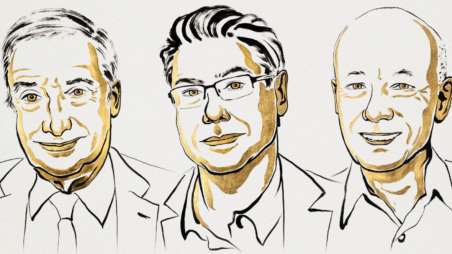How to destroy “creatively”: Through the research of the Nobel Prize winners in Economics of 2025
How to destroy “creatively”: Through the research of the Nobel Prize winners in Economics of 2025

Since the dawn of the Industrial Revolution, humanity has seen unparalleled growth, an upward trajectory never witnessed before, where every decade brought forth new technologies that led to sustained progress in agriculture, industry, science, and commerce.
For the historically uninformed, this sustained growth may seem expected; however, for the majority of human history, that was never the case. Whenever a boom cycle of an economic trend began, it eventually fizzled out, leaving behind its unfortunate victims while bringing vast wealth to a collective ruling elite.
The last two centuries have been an exception to this trend. Yes, wealth is being concentrated, and yes, the ruling elite are still hoarding it, but the number of people emerging from dire poverty and starvation has been staggering, and more importantly, consistent.
Therefore, by explaining why we are observing such a continuous upward trend and what factors are at play, Joel Mokyr, Philippe Aghion, and Peter Howitt have jointly won the Sveriges Riksbank Prize in Economic Sciences in Memory of Alfred Nobel 2025, commonly referred to as the Nobel Prize in Economic Sciences.
The need to destroy the vintage
For capitalism to thrive, innovation must be a constant factor in society. New entrepreneurs must introduce radical technological changes to keep the wheel turning. However, changes in technology are inevitable, and historically, change alone did not ensure the sustained growth we witness today.
According to Philippe Aghion and Peter Howitt, this process can be termed creative destruction. A new technology must establish itself not merely by eradicating the old but by building upon it, thereby ensuring sustained growth.
For this ability to build upon old technology, firms and the state must have useful knowledge, meaning a specific understanding of how and why it has its precise impact in the first place. The Nobel Committee said Mokyr “demonstrated that if innovations are to succeed one another in a self-generating process, we not only need to know that something works, but we also need to have scientific explanations for why.”
The laureates’ mathematical model demonstrated that one outlet for gaining useful knowledge is investing in R&D. As private firms throughout the twentieth century became more competitive, their approach to differentiation and improvement relied on the establishment of rigorous research.
This trend is clearly observed in the pharmaceutical industry today and extends to almost every industry not practising oligopolistic tendencies. Moreover, the first to capitalise on this useful knowledge gains a significant advantage in the constant race of capitalism.
The other side of ‘creative destruction’
History has proven that progress and destruction are two sides of the same coin. A stagnant civilisation is a dead one, and to eliminate stagnation and ensure mobility, the stable structures in place must undergo heavy destruction and reconstruction.
However, this harsh reality comes at a cost. Whenever an industry fails, it leaves behind a trail of unemployment and social stratification. It means job losses, declining wages, and obsolete labour skills. Therefore, as humanity needs time to adapt to creative destruction, now moving at a rapid pace, the laureates have emphasised the need for effective safety nets, safety nets that not only catch the falling victim but also rejuvenate them to rise again, better prepared and equipped with the necessary tools.
The timing
It seems more relevant than ever to discuss the nature of creative destruction. Humanity is once again at an impasse. The frontier of artificial intelligence is wider than ever before, as different companies race to reach the peak of innovation, inevitably making certain jobs obsolete and irrelevant. As expected, the elite are in clear danger of such destruction, and some pessimistic economists have predicted gloomy scenarios ahead. However, Joel Mokyr is not a pessimist at all.
In an interview with the Associated Press in the early 2000s, when this precise pessimistic tone among economists dominated the zeitgeist, it was Mokyr’s optimism that foresaw economic growth in the development of the internet and smartphones.
Holding such a view helped him predict that the next destruction ahead may not be as bad as it seems. Aghion is also upbeat about artificial intelligence, saying: “AI has a big growth potential,” although he noted the importance of competition policy.
Competency and the acceptance of change are the central themes of their research, as they emphasised the importance of constant progression and innovation. Their model explained the need to invest in scientific research and the necessity of rigorously following the scientific method. If this is done effectively and efficiently, then we may have nothing to fear in the days ahead.


